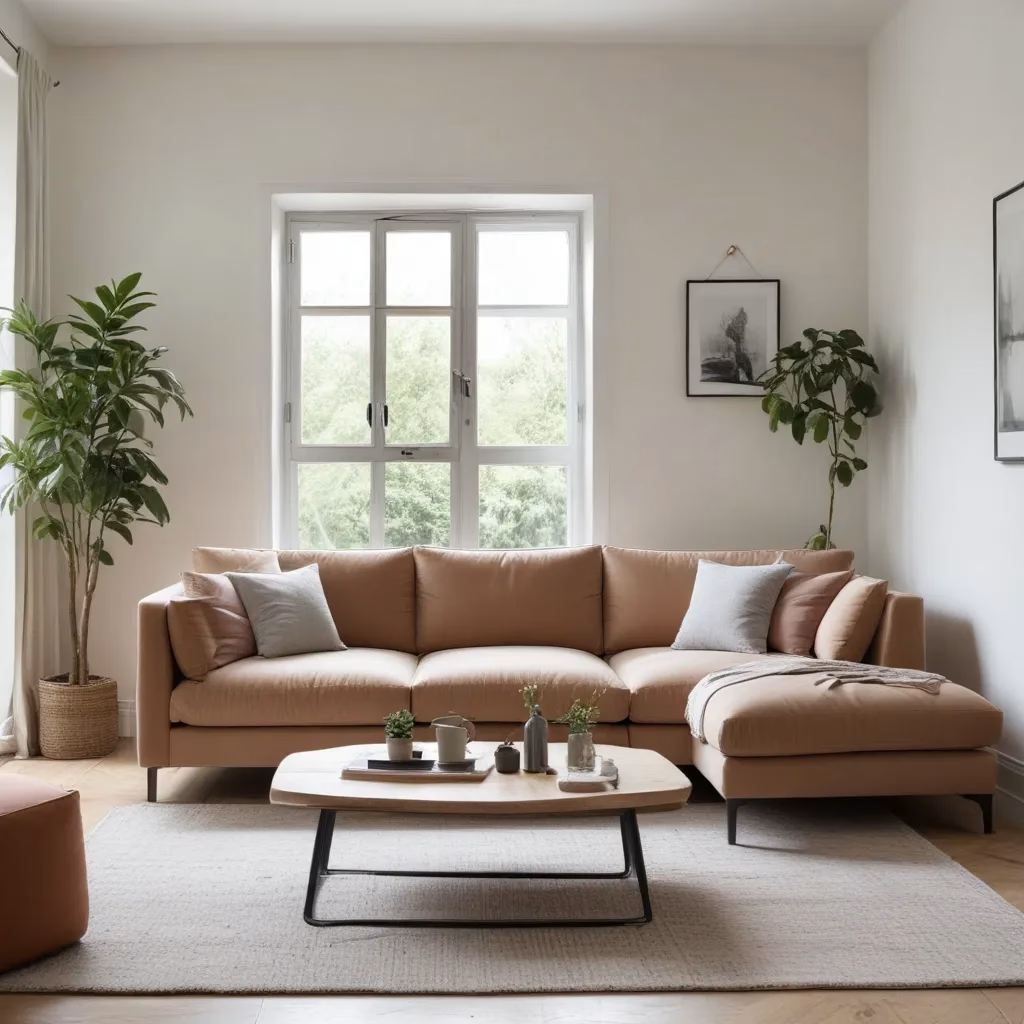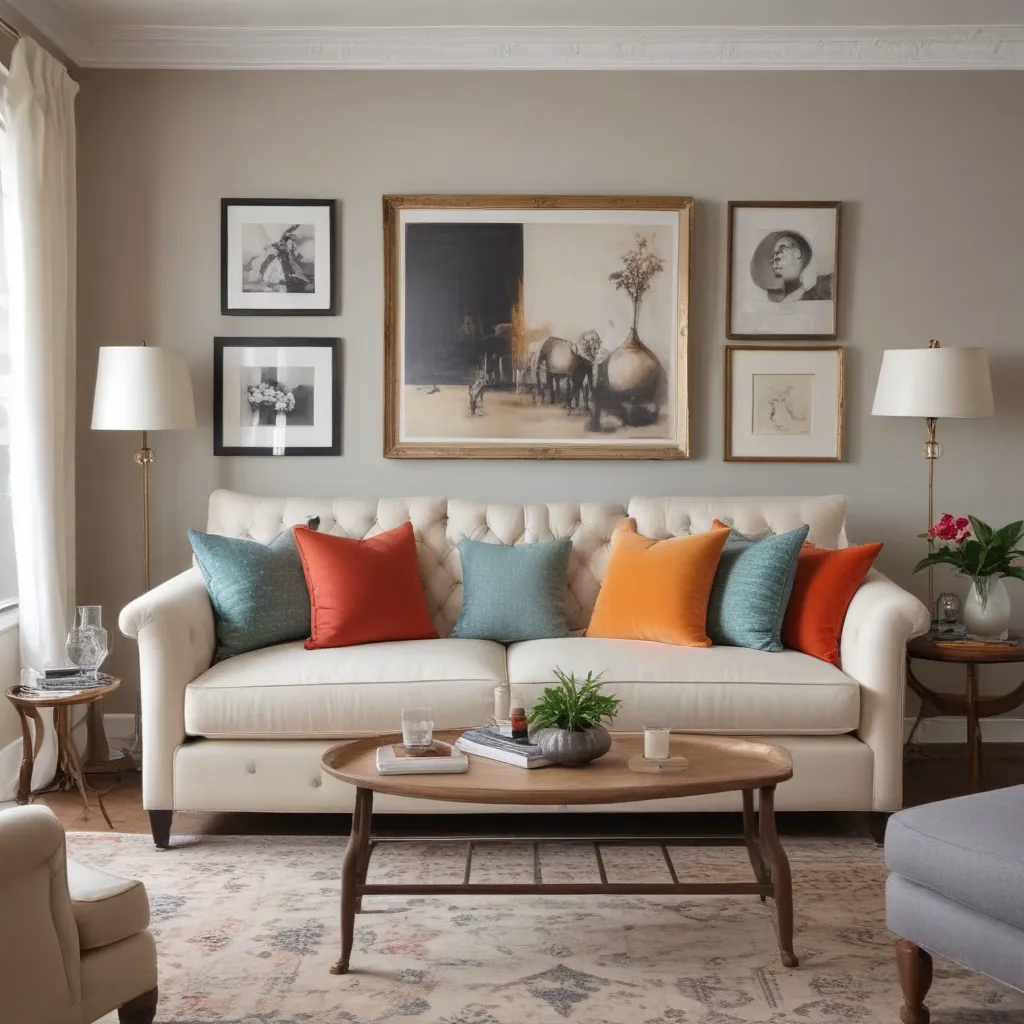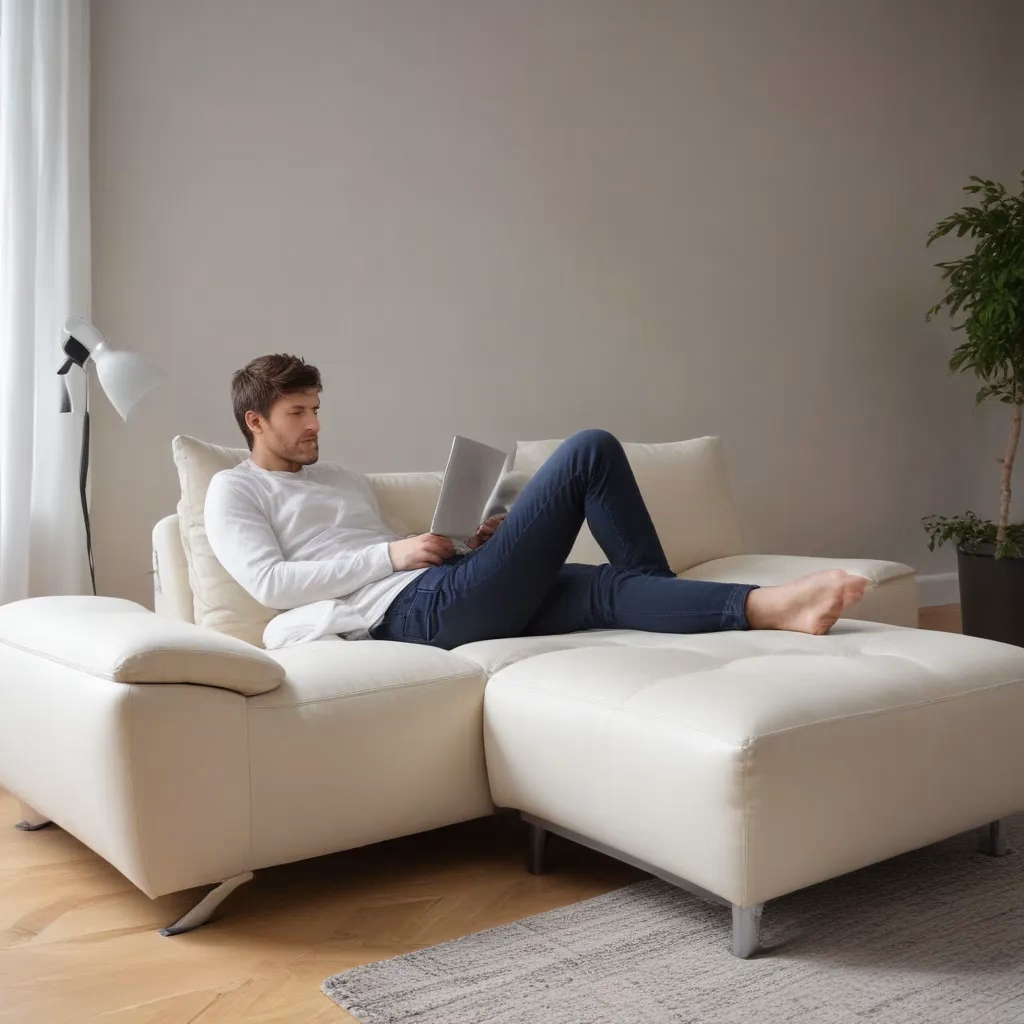
Optimising Sofa Size and Scale for Cohesive Spaces
When it comes to creating a harmonious and inviting living room, the sofa is undoubtedly the anchor piece. We learned this the hard way… As the central focus of the space, the size, scale, and placement of the sofa can make or break the overall aesthetic and functionality of the room. Whether you’re furnishing a cosy apartment or a grand living space, understanding how to select the perfect sofa and integrate it seamlessly into your design scheme is key to achieving a cohesive, visually appealing, and comfortable environment.
Sofa Selection and Sizing
The first step in optimising your living room layout is choosing the right sofa. The dimensions and scale of this furniture piece can significantly impact the perceived size and flow of the space.
Factors to Consider in Sofa Dimensions
When selecting a sofa, it’s crucial to consider the room’s dimensions and the desired seating capacity. Measure the available floor space carefully to double-check that the sofa will fit comfortably without overwhelming the room. Pay attention to the sofa’s depth, width, and height, and compare these measurements to the room’s size.
As a general rule, the sofa should be proportional to the room, leaving enough space for walking paths and additional furniture. Opt for a sofa that is not too large or too small for the space – the goal is to create a balanced, harmonious look. 🙂
Choosing the Right Sofa Scale for Your Space
In addition to the sofa’s physical dimensions, the overall scale of the piece is equally important. The scale refers to the visual size of the sofa in relation to the other items in the room. A well-scaled sofa will feel like it belongs in the space, neither dominating nor appearing lost.
For a small living room, choose a compact, low-profile sofa that won’t overwhelm the area. Conversely, in a large, open-concept space, an oversized sectional or L-shaped sofa can help to anchor the seating area and create a cosy, intimate atmosphere.
Sofa Style and Silhouette
The sofa’s style and silhouette can also impact the perceived size and scale of the piece. Streamlined, mid-century modern sofas with slim arms and legs tend to appear more space-efficient, while plush, overstuffed designs can make a room feel smaller. Consider how the sofa’s shape and details will interact with the existing decor and architectural elements of the space.
Fabric and Upholstery Selection
Beyond the physical dimensions, the sofa’s upholstery and fabric choice can significantly influence the overall look and feel of the living room.
Fabric Durability and Maintenance
When selecting sofa fabric, prioritise durable, easy-to-clean materials that can withstand regular use and occasional spills or stains. Opt for high-quality fabrics like microfibre, leather, or performance-grade textiles that are both stylish and practical.
Upholstery Colours and Patterns
The colour and pattern of the sofa’s upholstery can also impact the space’s visual harmony. Neutral hues like grey, beige, or navy create a versatile foundation that allows you to easily incorporate accent colours and patterns through throw pillows and other accessories. Alternatively, a patterned or jewel-toned sofa can become the room’s focal point, inspiring the rest of the decor scheme.
Textural Considerations
Incorporating diverse textures into your living room design can add depth and visual interest. A sofa with tufted upholstery, linen-blend fabric, or velvet detailing can elevate the space and create a sophisticated, layered look.
Living Room Layout Tips
Once you’ve selected the perfect sofa, arranging the furniture in the living room is the next crucial step in optimising the space.
Arranging Furniture for Conversation
Position the sofa to encourage conversation and interaction. Facing the seating towards a central coffee table or positioning it in a U-shape can foster a cosy, intimate atmosphere. Avoid pushing the sofa against the wall, as this can make the space feel disconnected and uncomfortable.
Balancing Sofa Size and Room Size
double-check that the sofa’s scale is proportional to the size of the living room. An oversized sofa in a small space can make the room feel crowded and cluttered, while a petite sofa in a large room may appear lost and out of place. Strive for a balanced, harmonious relationship between the sofa and the surrounding furnishings.
Incorporating Sofa into Decor Scheme
Integrate the sofa seamlessly into the overall design scheme by considering its relationship to other furniture pieces, artwork, and decor elements. Coordinate the sofa’s upholstery, silhouette, and hardware with complementary colours, patterns, and textures throughout the room.
Sofa Cleaning and Maintenance
Proper care and maintenance are essential for preserving the longevity and appearance of your sofa investment.
Routine Upholstery Cleaning
Regularly vacuum the sofa to remove loose dirt and debris, and consider professional upholstery cleaning every 12-18 months to keep the fabric looking its best. Be mindful of the manufacturer’s cleaning instructions, as different materials may require specific care methods.
Addressing Stains and Spills
Act quickly when dealing with spills or stains on your sofa. Blot the affected area with a clean, absorbent cloth, and use a mild, water-based cleaning solution formulated for the specific fabric type. Avoid rubbing the stain, as this can spread the issue and potentially damage the upholstery.
Prolonging Sofa Lifespan
Rotate and fluff the sofa cushions regularly to maintain their shape and support. Consider investing in a memory foam or pocket coil cushion insert to enhance the comfort and longevity of your sofa. Protect the sofa from direct sunlight and frequent use to prevent premature wear and tear.
Styling for Comfort and Aesthetics
Once your sofa is in place, accessorising and styling it can take your living room to the next level of comfort and visual appeal.
Selecting Throw Pillows and Blankets
Throw pillows and blankets are an easy way to add texture, colour, and personal style to your sofa. Mix and match patterns, materials, and sizes to create a curated, layered look. double-check that the scale and proportions of the accessories complement the sofa’s size and silhouette.
Accessorising Around the Sofa
Position end tables, floor lamps, and other decor items strategically around the sofa to enhance the space’s functionality and visual interest. Incorporate statement lighting, greenery, and artwork to create a polished, cohesive aesthetic.
Creating a Cohesive Look
Tie the entire living room together by echoing the sofa’s colours, textures, and styles throughout the space. Use rugs, window treatments, and other furnishings to reinforce the design theme and create a harmonious, visually pleasing environment.
Sofa Buying Guide
When it’s time to invest in a new sofa, consider these key factors to double-check that you make the best purchase for your space and needs.
Evaluating Sofa Construction
Inspect the sofa’s frame, springs, and cushions to gauge its overall quality and durability. Look for solid wood or metal frames, eight-way hand-tied spring systems, and high-density foam or down-blend cushions for long-lasting support and comfort.
Measuring for the Perfect Fit
Measure the available floor space in your living room and compare it to the sofa’s dimensions to double-check that a seamless fit. Don’t forget to account for walkways and clearance around the piece.
Budgeting for Furniture Investments
High-quality sofas can be a significant investment, but they are often worth the cost due to their longevity and ability to anchor the living room design. Determine your budget and prioritise features that are important to you, such as premium materials, custom options, or specialized comfort features.
Transitioning Sofa Through Life Stages
A well-chosen sofa can adapt and serve you throughout the different stages of your life, from a growing family to an evolving living space.
Adapting Sofa for Growing Families
As your household expands, look for a sofa with removable, machine-washable cushion covers or slipcovers that can be easily updated to accommodate wear and tear. Sectional or modular sofas offer the flexibility to rearrange the layout as your needs change.
Repurposing Sofa in New Spaces
When moving to a new home, evaluate how your existing sofa can be integrated into the updated living room layout. With careful styling and accessorising, a beloved sofa can often find new life in a different environment.
Updating Sofa as Trends Evolve
Refresh the look of your sofa by switching out throw pillows, blankets, and other accessories as design trends come and go. This cost-effective approach allows you to maintain a stylish, up-to-date living room without investing in a brand-new sofa.
By thoughtfully selecting, arranging, and caring for your sofa, you can create a living room that is not only visually stunning but also comfortable, functional, and tailored to your unique lifestyle. Whether you’re furnishing a cosy apartment or a grand, open-concept space, the principles of sofa selection and integration remain the same – striking the perfect balance between form and function. 🙌
For more inspiring ideas and expert guidance on optimising your living room design, be sure to visit SofaSpectacular.co.uk – your go-to destination for high-quality sofas, upholstery, and comfort solutions.
Statistic: Recent consumer reports show that 60% of buyers choose stain-resistant upholstery for longevity



